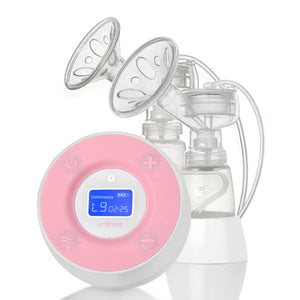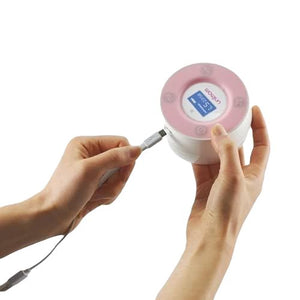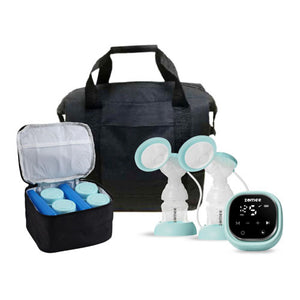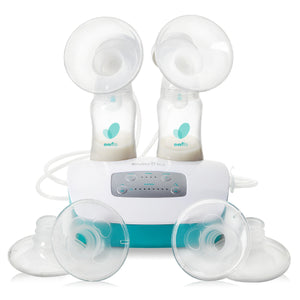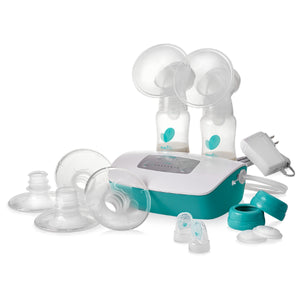Breastfeeding parents have two main options for pumping: manual and electric breast pumps. While manual pumps require hand pumping, electric pumps use a motor to express milk.
Breast pumps are standard, but there isn't a single, practical way that works for everyone. It is crucial to select the right breast pump for your needs and learn how to use it properly.
Keep reading to learn how to use a manual breast pump and determine if it's the right choice for you.
Is Using a Manual Pump the Best Option for You?
Manual breast pumps are not as standard as electric ones but have some benefits. They are cheaper, easy to carry, and you don't need electricity. They are also quieter and can be a backup option.
But they take more time, require both hands and are less efficient than electric pumps. They are suitable for occasional use, not for regular pumping. However, they are a suitable and economical option if you get used to them.
How to Use a Manual Breast Pump?
A manual breast pump can be an excellent option for breastfeeding parents. Here's a quick start guide to help you express milk for your baby the right way.
1- Clean and Prepare
It's essential to start with clean equipment to ensure the safety of your breast milk.
The Centers for Disease Control and Prevention (CDC) warn that infants can become ill from bacteria that grow on breast pump parts. Before beginning, properly wash your hands with soap and warm water for at least 20 seconds. Approach pumping the same way you would handle cooking surfaces.
Read the top breast-pumping tips every new mother should know.
2- Assemble the Pump
Most manual breast pumps have an instruction manual showing you how to assemble all the pieces. Take time assembling the pump correctly, ensuring all parts fit snugly.
Once assembled, ensure everything is securely attached and ready for use.
3- Encourage Milk Flow
Getting the milk to flow can take time and encouragement for some mothers. Using warm compresses on your breasts or gently massaging them can help stimulate the let-down reflex, making it easier for milk to start flowing.
Relaxing and thinking about your baby can also help trigger the release of oxytocin, a hormone that aids milk ejection.
4- Create a Seal
When placing the funnel-shaped part of the pump over your breast, ensure it forms a tight seal. It prevents air from leaking out and ensures efficient suction.
Position the flange over your nipple and gently press it against your breast to create a secure seal.
Read: how to measure your flange size.
5- Start Pumping
Begin by gently squeezing the pump handle. As you do this, the pump creates suction, which draws your nipple into the flange and stimulates milk flow.
Find a comfortable rhythm for pumping, similar to the sucking pattern of your baby during breastfeeding.
It could take some trial and error to find the ideal rhythm and pressure for you.
6- Switch Sides
Once you've emptied one breast, switch the pump to the other side to express milk from the other breast.
Continue pumping until you feel the milk flow slowing down or stopping.
If needed, you can return to the first breast to pump any remaining milk.
7- Consider Partial Pumping
It's not always necessary to empty both breasts. Partial pumping can be helpful for various reasons, such as stimulating milk flow before nursing or relieving engorgement.
Pay attention to your body's needs and adjust your pumping routine accordingly.
8- Store the Milk
The CDC states that you can store fresh breast milk for up to four hours at room temperature.
Most people choose to refrigerate it or use it for feeding immediately. Refrigerated breast milk remains suitable for up to four days.
However, when stored in a chest or upright deep freezer, it lasts six to 12 months.
Choose the Right Breast Pump with MoovKart!
When selecting the right breast pump, consider how you will use it. Experts suggest the following:
- Manual Pump: Ideal for occasional pumping.
- Personal Electric Pump: Great for pumping at work or while travelling.
- Hospital-Grade Electric Pump: Best for managing milk supply over extended periods, such as with premature babies or babies in the NICU.
You can check out MoovKart’s website to get the right breast pump.
People Also Ask!
Q1. How Do You Operate a Rubber-Bulb Manual Breast Pump?
A1.To use a manual breast pump with a rubber bulb, ensure cleanliness, place the bulb over your breast, and rhythmically squeeze to create suction, expressing milk effectively.
Q2. How Should a Beginner Handle a Manual Breast Pump?
A2. When using a manual breast pump for the first time, wash your hands, find a comfortable spot, and follow the instructions carefully, allowing yourself time to adjust to the process.
Q3. Can Someone Who Has Never Pumped Before Use a Manual Breast Pump?
A3. Yes, you can. Start by reading the instructions carefully and take your time to get comfortable with the pumping process.


